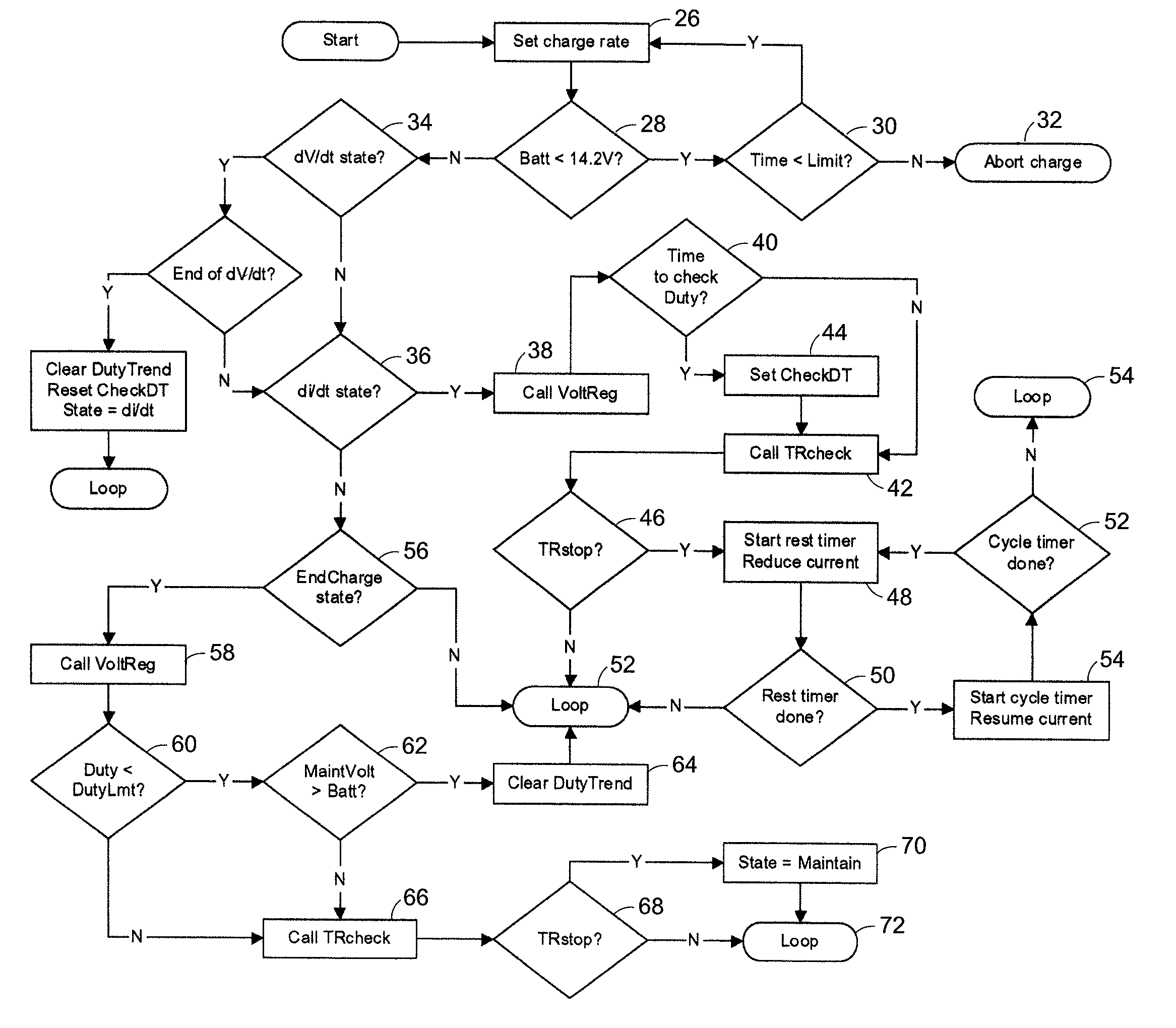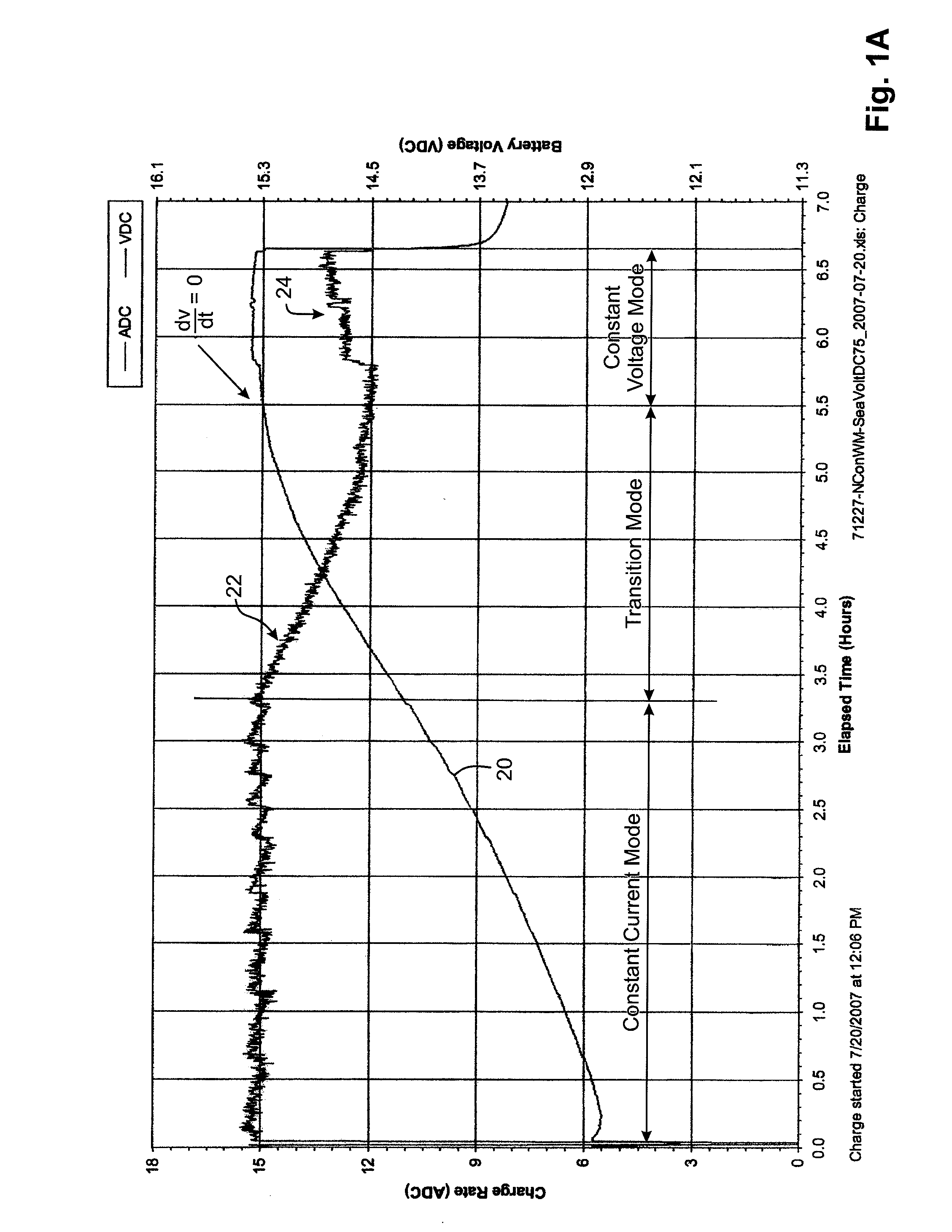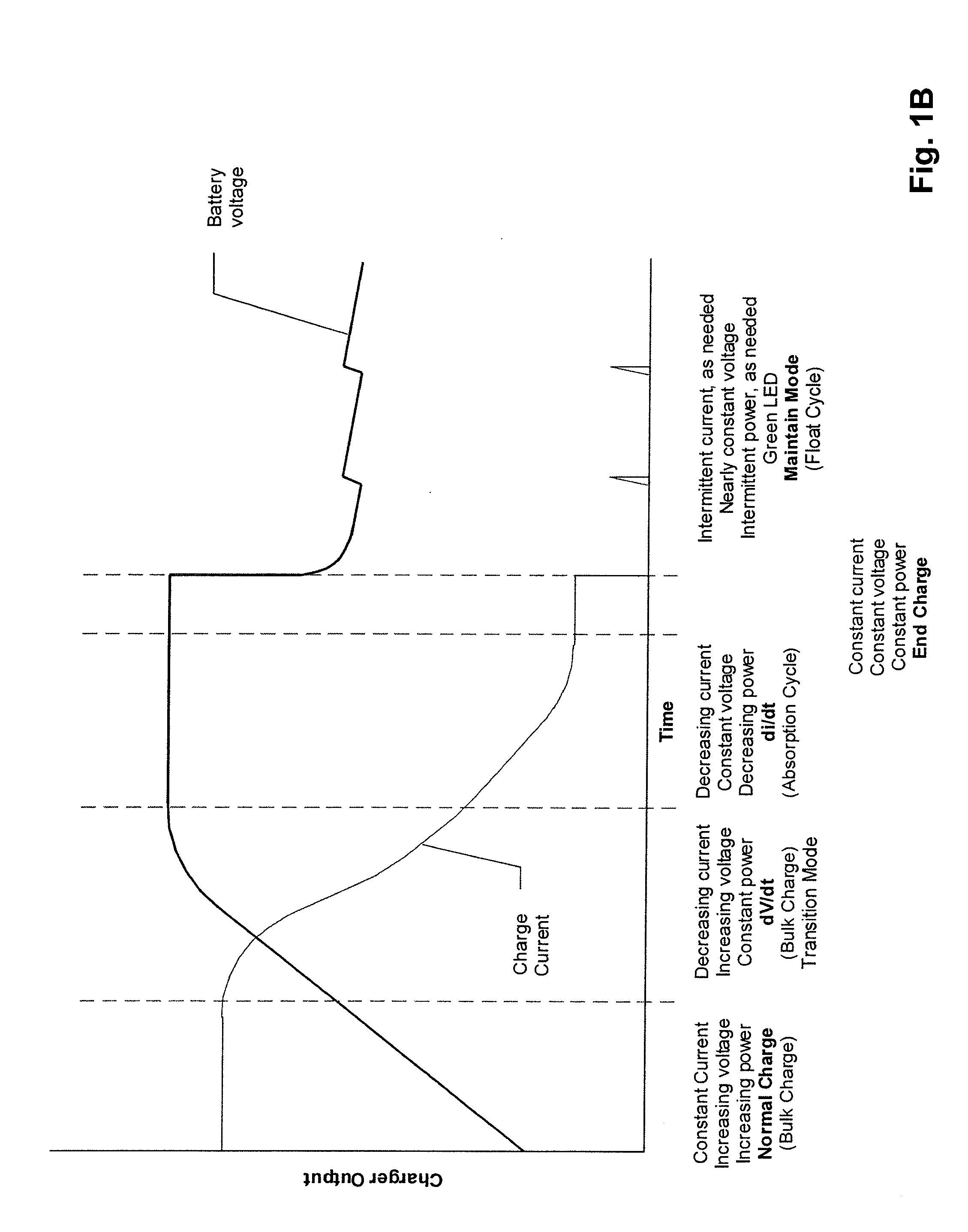Thermal Runaway Protection System for a Battery Charger
a protection system and battery charger technology, applied in battery overheat protection, secondary cell servicing/maintenance, safety/protection circuit, etc., can solve the problems of battery damage, personal injury, thermal runaway, etc., and achieve the effect of reducing the risk of a battery experiencing a thermal runaway condition, preventing accidental discharge, and preventing accidental discharg
- Summary
- Abstract
- Description
- Claims
- Application Information
AI Technical Summary
Benefits of technology
Problems solved by technology
Method used
Image
Examples
Embodiment Construction
[0025]The present invention relates to a protection system for a battery charger that utilizes software to detect a thermal runaway condition, thereby eliminating the need for external temperature sensors and which does not rely on actions by the technician or user. Briefly, the protection system includes one or more electrical sensors for sensing one or more electrical parameters and determining a thermal runaway condition based upon the trend of the electrical charging parameters. In general, the system monitors the charging characteristics of a battery during a normal charging cycle. If the charging characteristics deviate from a normal charging cycle by a significant amount as determined by software, the system assumes a thermal runaway condition. For example, in one embodiment of the invention, the voltage and current is monitored during an initial phase of the charging cycle in which the charging current is held constant or controlled and the voltage is monitored.
[0026]During ...
PUM
| Property | Measurement | Unit |
|---|---|---|
| temperature | aaaaa | aaaaa |
| temperature | aaaaa | aaaaa |
| closed circuit charging voltage | aaaaa | aaaaa |
Abstract
Description
Claims
Application Information
 Login to View More
Login to View More - R&D
- Intellectual Property
- Life Sciences
- Materials
- Tech Scout
- Unparalleled Data Quality
- Higher Quality Content
- 60% Fewer Hallucinations
Browse by: Latest US Patents, China's latest patents, Technical Efficacy Thesaurus, Application Domain, Technology Topic, Popular Technical Reports.
© 2025 PatSnap. All rights reserved.Legal|Privacy policy|Modern Slavery Act Transparency Statement|Sitemap|About US| Contact US: help@patsnap.com



